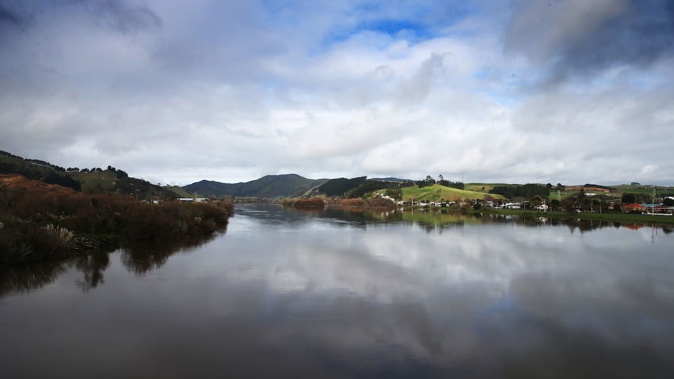
- Prime Minister Christopher Luxon says the Government is monitoring elevated arsenic levels in Auckland and Waikato’s drinking water.
- Luxon confirmed the water is safe to drink, despite tests showing arsenic levels above the usual standard.
- Watercare and Waikato District Council are closely monitoring the situation, with an assurance of ‘constant, transparent communication’.
Prime Minister Christopher Luxon says the Government is keeping a close eye on developments around elevated levels of arsenic in Auckland and Waikato’s drinking water to ensure “constant, transparent communication”.
Elevated levels of the toxic heavy metal have been detected in treated water sourced from the Waikato River, authorities revealed yesterday.
Speaking from Auckland this afternoon, Luxon said Local Government Minister Simeon Brown had last night contacted the Water Services Authority and asked it to monitor the decisions of Watercare and Waikato District Council.
“[They will] make sure that if there’s any change in that situation, there is constant, transparent communication to the New Zealand people about that.”
He said while people would be alarmed, “it’s a slight elevation of very, very small numbers”.
“It is not a public health risk, the water is safe to drink.
“Waikato District Council and Watercare, with the support of the Water Services Authority, will continue to monitor it very closely,” he said.
Luxon said arsenic happens naturally in New Zealand and it’s in water supplies because of geothermal activity and a range of other things.
He confirmed he’d been briefed on the situation, but didn’t intend on meeting with Watercare bosses.
Akl’s water treatment explained: Why is the amount of arsenic higher than usual?
Some 20% of Auckland’s tap water comes from the Waikato River, Watercare chief operations officer Mark Bourne said.
Dr Mike Scarsbrook, Waikato Regional Council’s environmental science manager, said it was normal for there to be relatively high levels of arsenic in the Waikato River.
He said this was due to geothermal activity in the area.
Water from the river is treated to remove excess levels of arsenic and bring the amounts within acceptable standards before it is supplied to households, Scarsbrook said.
However, in this case, tests of samples of the already treated water showed the amount of arsenic was above the standards set by the country’s water safety regulator.
There are several technical methods used to remove arsenic from water. The Herald has approached Watercare for an explanation of the methods it uses at its Waikato Water Treatment Plant in Tūākau.
Watercare reported 0.011 milligrams of arsenic per litre of water in a sample from November 25, Monday. Hamilton City Council tests found 0.0113mg/L on November 19, last Tuesday and 0.0115mg/L on November 20, Wednesday.
The maximum accepted value for arsenic is 0.01mg/L.
Dr Mike Scarsbrook. Photo / Elaine Fisher
Previous tests of treated water earlier in the month showed arsenic levels below that maximum standard.
Scarsbrook said there were several possible reasons for the higher-than-standard arsenic levels in the treated water. He said it could be due to “a change in the [chemical] form” of the metal in the raw river water.
“So, [possibly] more dissolved arsenic rather than what is bound to a particle,” he said.
“We do know that at times, particularly in the summertime, we can see elevated levels of dissolved arsenic coming from sediments in the bottom of the hydro lakes and along the river.”
Raphael Franks is an Auckland-based reporter who covers breaking news. He joined the Herald as a Te Rito cadet in 2022.
Benjamin Plummer is an Auckland-based reporter who covers breaking news. He has worked for the Herald since 2022.
Take your Radio, Podcasts and Music with you









